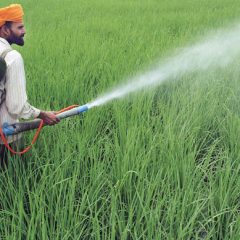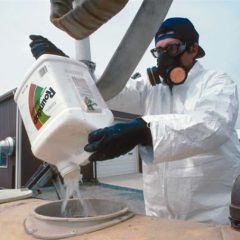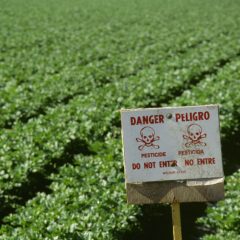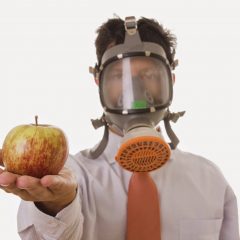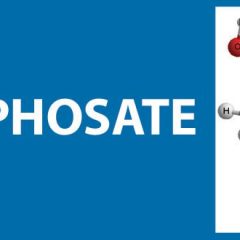Maharashtra is one of the major cotton growing areas in India. Most of the cotton planted in recent years has expressed the Bt gene to control certain insects, but a combination of factors including resistance has eroded its efficacy. Between higher priced seed and the need to apply extra insecticide, cotton farmers in the region […]
Read More, References, Comment »
As predicted, the EPA has announced that it will allow use in 2018 of dicamba on dicamba-resistant soybeans and cotton, despite the serious problems that occurred in 2017. The acting chief of the herbicide branch, Reuben Baris, said the EPA has not yet decided on the “safeguards” it will impose in a September 19, 2017 […]
Read More, References, Comment »
The tagline in the remarkable New York Times story on junk food in Brazil reads: “As growth slows in wealthy countries, Western food companies are aggressively expanding in developing nations, contributing to obesity and health problems.” The Times story appeared September 16, 2017 and is accessible online. The authors, Andrew Jacobs and Matt Richtel, explain […]
Read More, References, Comment »
A significant body of research now suggests that dietary exposure to glyphosate can alter the microbiome in the human stomach. One outcome of shifting the microbiome in the human GI track is what is often referred to as “sour stomach.” Anyone who has experienced a sour stomach knows what it is (but perhaps not by […]
Read More, References, Comment »
The U.S. Farmers and Ranchers Alliance is one of the well-funded, influential organizations seeking to educate the public about all-things-agricultural (albeit, mostly conventional ag). They address food and farming-related economic, trade, federal policy, conservation, food safety, biotech, and research issues. Their CEO, Randy Krotz published an opinion piece July 6, 2017 in AgriPulse, a widely […]
Read More, References, Comment »
The American Academy of Pediatrics and the Environmental Working Group submitted a letter this week to EPA Administrator Scott Pruitt condemning the Agency’s decision not to restrict use on the pesticide chlorpyrifos. As this Hygeia’s Blog describes, this decision went against the EPA’s own scientists, who had previously concluded that chlorpyrifos was linked to neurological […]
Read More, References, Comment »
Early menopause is defined as the cessation of ovarian function before the age of 45. It impacts about 10% of women and heightens risk for cardiovascular disease, osteoporosis, and other diseases. Research has uncovered few ways to prevent early-onset menopause. But scientists at the University of Massachusetts have found one way to reduce the odds […]
Read More, References, Comment »
Virtually all Americans who enjoy at least a few servings of fresh fruits and vegetables are exposed on a daily basis to one to four residues of neonicotinoid (nicotinyl for short) insecticides. That’s why they are in me and you most every day, except of course for the days we purchase and consume organic produce. […]
Read More, References, Comment »
The February 2017 issue of Environmental Health Perspectives contains an important open access research paper on the human health effects of neonicotinoid insecticides (nicotinyls for short). The work was carried out by a team led by Dr. Melissa Perry of George Washington University. The issue also includes an accompanying news report by Nate Seltenrich. Dr. […]
Read More, References, Comment »
A King’s College London team led by Robin Mesnage and Michael Antoniou has published in Nature Scientific Reports a first-ever metabolomic analysis of the impact of very, very low chronic exposures to formulated glyphosate-based herbicides (GBHs) on rat non-alcoholic fatty liver disease (NAFLD). Hygeia Analytics is pleased to provide access to the full Mesnage et al. […]
Read More, References, Comment »

